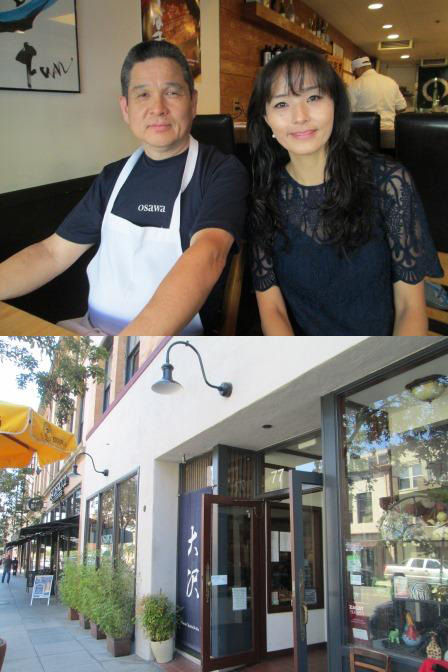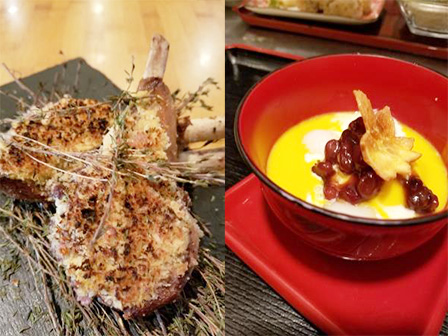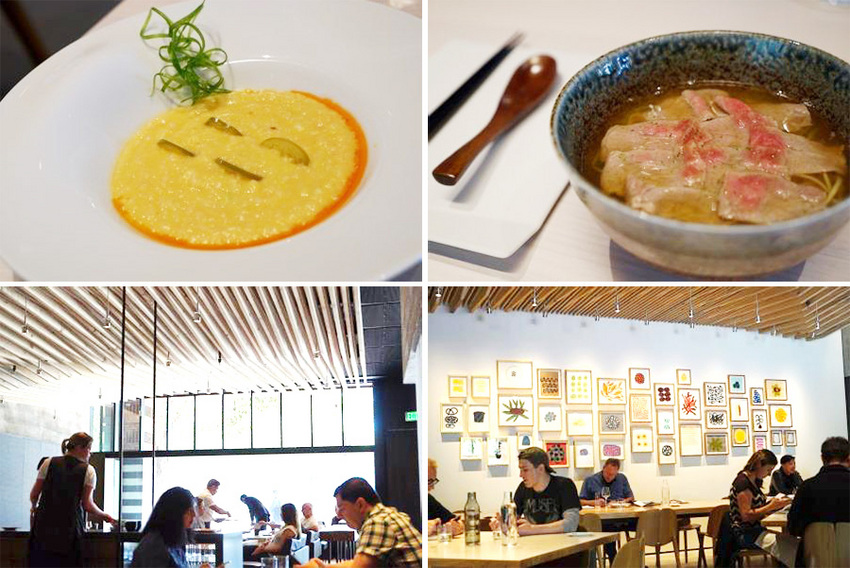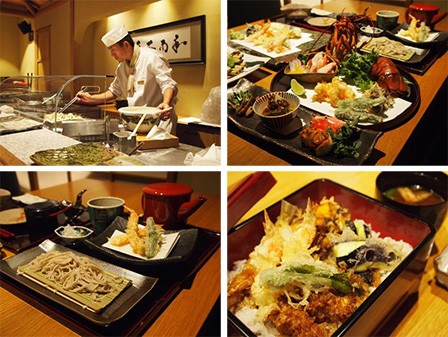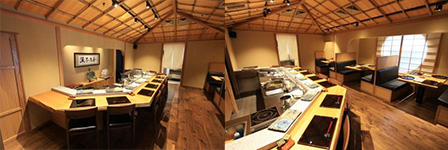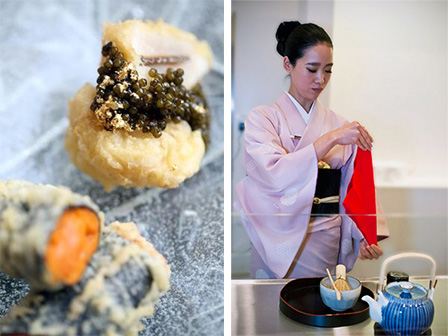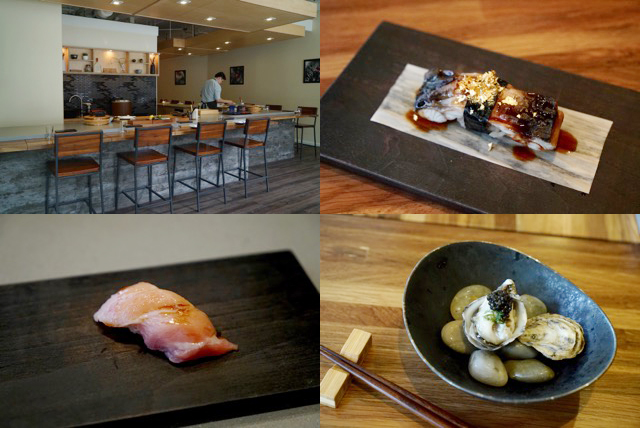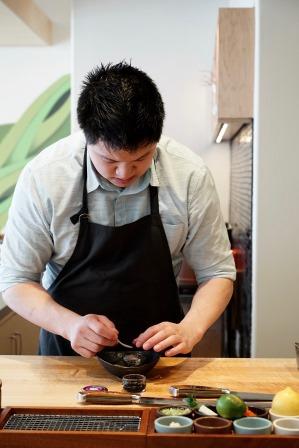Iwate Specialties and Sake Pairing
By Kosuke Kuji
Iwate prefecture I live in is the number one largest prefecture next to Hokkaido and the area is about the same size as Shikoku. Besides the 70% of the prefecture being mountainous, it contains Sanriku Coast which is a ria coast and is famous as the Japanese fjord. Abundant with food from both the land and sea, another character of Iwate prefecture is having the rich food culture. I'm always asked how the Japanese sake goes with food overseas.
If it is Japanese food with Japanese sake, any combination goes well to an extent, but if you're looking for the best combination, some of the best can be found by pairing food materials from the local areas of the brew masters that brew regional sake.
To start, Iwate prefecture that has the Sanriku Coast is a large fish industry area. A variety of fishes and shellfishes at the coastal areas can be enjoyed. Out of all those items, "Abalone" represents Iwate prefecture.
Especially the abalone that is caught in Yoshihama of 'Sanriku, Ofunato' is dried and has been exported to China from long ago. This abalone is called "Yoshihama Dried Abalone" and is useful as the highest quality food material in China.
This Sanriku in Iwate is proud of their "Sanriku Takarazuke" which is pickled with abalone, salmon roe, smelt roe and 'mekabu' (seaweed family) etc is a specialty item that shines out of all items in Iwate. Mr. Nakamuraya of 'Kamaishi, Iwate' who also starred on the popular TV program "Ryori no tetsujin" (Iron Chiefs) is the one who makes this "Sanriku Takarazuke". This specialty item that combines the goodness of Sanriku ocean and Nanbu Bijin Daiginjyo just make the best combination and the fruity aroma of the Daiginjyo and the sea aroma and salty tang make the best match.
This Sanriku Takarazuke pairs well with sake but it is also wonderful eating it after putting it on top of just made hot rice.
It just makes me feel good to be born a Japanese knowing we have Iwate prefecture that has the best seafood, with variety of processed foods, also as raw or dried and processed and being distributed throughout Japan and to the world.
「岩手の名産と酒の相性について」
私の住んでいる岩手県は日本の中で北海道を除けば1番広い県で、四国とほぼ同じくらいの面積です。県土の70%は山で、それ以外には日本のフィヨルドとして有名なリアス式海岸の三陸海岸を有します。
山の幸、海の幸の両方に恵まれ、豊かな食文化を持つのが岩手県の特徴でもあります。
日本酒は、必ず料理との相性を海外では聞かれます。日本料理と日本酒なら、ある程度、どんな組み合わせも大丈夫なのですが、やはりベストの組み合わせ、となると、地酒を醸されている蔵元の地元の食材との相性は最高のものがあります。
まず岩手県は三陸海岸を有する漁業大国です。沿岸地方では昔から様々な魚介類が食べられています。その中でも、岩手を代表するのが「アワビ」です。
特に大船渡市三陸町の吉浜でとれるアワビは乾燥させ「乾鮑(かんぽう)」として昔から中国へ輸出されてきました。このアワビを「吉浜乾鮑」と言いまして、中国では最高級の食材として重宝されています。
この岩手の三陸が誇るアワビとイクラ、ししゃもの卵、めかぶなどを漬け込んだ、「三陸海宝漬」は岩手の中でもきらりと光る名産品です。この「三陸海宝漬」をつくるのが、日本の人気テレビ番組だった「料理の鉄人」にも出演した岩手県釜石市の中村家さんです。まさに三陸の海の恵みを詰め込んだこの名産品と、南部美人の大吟醸との組み合わせは最高で、大吟醸のフルーティーな香りと、磯の香りと味わいがまさにベストマッチします。
この三陸海宝漬はお酒ともとても相性がいいのですが、アツアツの炊き立てご飯にかけて食べても最高においしいです。
まさに日本人に生まれてよかった、と思える最高の海の幸を岩手県は持っており、様々な加工食品、そして生のまま、干したりして加工したり日本中、そして世界へ広まっています。
Iwate prefecture I live in is the number one largest prefecture next to Hokkaido and the area is about the same size as Shikoku. Besides the 70% of the prefecture being mountainous, it contains Sanriku Coast which is a ria coast and is famous as the Japanese fjord. Abundant with food from both the land and sea, another character of Iwate prefecture is having the rich food culture. I'm always asked how the Japanese sake goes with food overseas.
If it is Japanese food with Japanese sake, any combination goes well to an extent, but if you're looking for the best combination, some of the best can be found by pairing food materials from the local areas of the brew masters that brew regional sake.
To start, Iwate prefecture that has the Sanriku Coast is a large fish industry area. A variety of fishes and shellfishes at the coastal areas can be enjoyed. Out of all those items, "Abalone" represents Iwate prefecture.
Especially the abalone that is caught in Yoshihama of 'Sanriku, Ofunato' is dried and has been exported to China from long ago. This abalone is called "Yoshihama Dried Abalone" and is useful as the highest quality food material in China.
This Sanriku in Iwate is proud of their "Sanriku Takarazuke" which is pickled with abalone, salmon roe, smelt roe and 'mekabu' (seaweed family) etc is a specialty item that shines out of all items in Iwate. Mr. Nakamuraya of 'Kamaishi, Iwate' who also starred on the popular TV program "Ryori no tetsujin" (Iron Chiefs) is the one who makes this "Sanriku Takarazuke". This specialty item that combines the goodness of Sanriku ocean and Nanbu Bijin Daiginjyo just make the best combination and the fruity aroma of the Daiginjyo and the sea aroma and salty tang make the best match.
This Sanriku Takarazuke pairs well with sake but it is also wonderful eating it after putting it on top of just made hot rice.
It just makes me feel good to be born a Japanese knowing we have Iwate prefecture that has the best seafood, with variety of processed foods, also as raw or dried and processed and being distributed throughout Japan and to the world.
「岩手の名産と酒の相性について」
私の住んでいる岩手県は日本の中で北海道を除けば1番広い県で、四国とほぼ同じくらいの面積です。県土の70%は山で、それ以外には日本のフィヨルドとして有名なリアス式海岸の三陸海岸を有します。
山の幸、海の幸の両方に恵まれ、豊かな食文化を持つのが岩手県の特徴でもあります。
日本酒は、必ず料理との相性を海外では聞かれます。日本料理と日本酒なら、ある程度、どんな組み合わせも大丈夫なのですが、やはりベストの組み合わせ、となると、地酒を醸されている蔵元の地元の食材との相性は最高のものがあります。
まず岩手県は三陸海岸を有する漁業大国です。沿岸地方では昔から様々な魚介類が食べられています。その中でも、岩手を代表するのが「アワビ」です。
特に大船渡市三陸町の吉浜でとれるアワビは乾燥させ「乾鮑(かんぽう)」として昔から中国へ輸出されてきました。このアワビを「吉浜乾鮑」と言いまして、中国では最高級の食材として重宝されています。
この岩手の三陸が誇るアワビとイクラ、ししゃもの卵、めかぶなどを漬け込んだ、「三陸海宝漬」は岩手の中でもきらりと光る名産品です。この「三陸海宝漬」をつくるのが、日本の人気テレビ番組だった「料理の鉄人」にも出演した岩手県釜石市の中村家さんです。まさに三陸の海の恵みを詰め込んだこの名産品と、南部美人の大吟醸との組み合わせは最高で、大吟醸のフルーティーな香りと、磯の香りと味わいがまさにベストマッチします。
この三陸海宝漬はお酒ともとても相性がいいのですが、アツアツの炊き立てご飯にかけて食べても最高においしいです。
まさに日本人に生まれてよかった、と思える最高の海の幸を岩手県は持っており、様々な加工食品、そして生のまま、干したりして加工したり日本中、そして世界へ広まっています。





